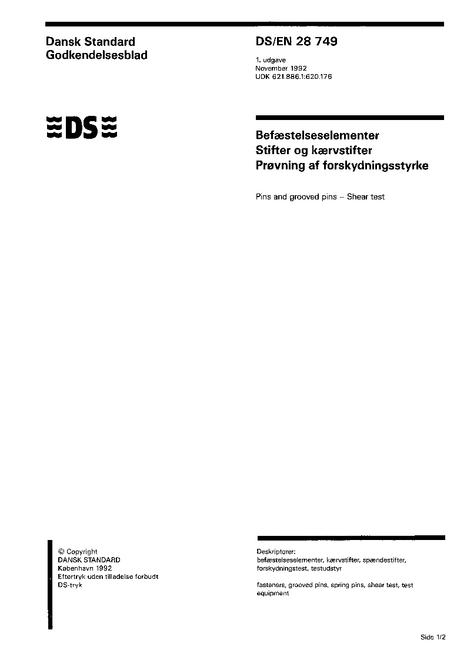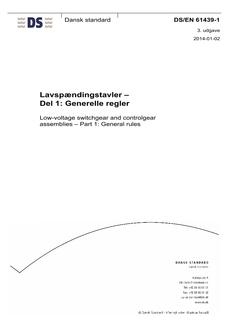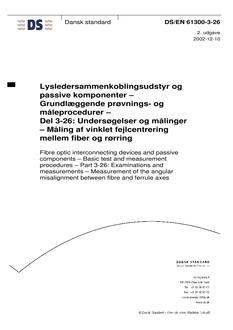-
-
Available Formats
- Availability
- Priced From ( in USD )
-
Available Formats
-
- Immediate download
- $69.00
- Add to Cart
-
- Printed Edition
- Ships in 1-2 business days
- $69.00
- Add to Cart
Customers Who Bought This Also Bought
-

DANSK DS/EN 15152+A1
Priced From $110.00 -

DANSK DS/ISO 8749
Priced From $28.00 -

DANSK DS/EN 61439-1
Priced From $206.00 -

DANSK DS/EN 61300-3-26
Priced From $60.00
About This Item
Full Description
This International Standard deals with characterization of microbiological methods. In terms of this document, characterization means the study of parameters that can be measured to describe how the method is likely to perform in a given set of conditions, which can be described as performance characteristics. The standard describes procedures for the determination of performance characteristics which can be used for subsequent validation or verification of methods. The emphasis is on selective quantitative methods and the standard applies to all types of water. Methods are considered microbiological when the quantitative estimate is based on counting of particles either directly with the aid of a microscope or indirectly on the basis of growth (multiplication) into colonies or turbidity. The principles and procedures within the scope are commonly known as direct (microscopic) count, most probable number (MPN) and colony count. Most of the procedures for the determination of performance characteristics described in this document are applicable to all three types of method. However, where the procedures are not applicable, alternative suggestions are made within the body of the document or in Annexes D and E (for repeatability, reproducibility and uncertainty of counting). Plaque counts of bacteriophages are in most respects similar to bacterial colony counts. Some of the ”newer” microbiological methods such as those utlizing fluorescent in situ hybridization (FISH) or polymerase chain reaction (PCR) can also be covered by this document but, they may require special consideration, depending upon how they are used. The issues of importance in these situations include the mechanism of determining the numbers of microbes present (e.g. standard curve for qPCR or microscopical count for FISH) and the viability of the organisms detected. If such techniques are used for confirmation as part of a method then all sections of this document are relevant. For methods that involve detection of components of cells or their metabolites then the applicability of this document should be assessed on a case by case basis.While not essential, during the characterization of microbiological methods it may be beneficial to generate data using stressed organisms. Various methods can be used to stress organisms, but the two that are most useful for water are disinfectant stress (usually chlorine injury) and nutrient depletion caused by organisms being in a low nutrient environment (i.e. drinking water and other oligotrophic waters) for a period prior to testing. The effect on some of the performance characteristics of “stressing” organisms is almost totally dependent on the type and degree of stress applied and it is inappropriate to include such detail in this standard. However, there are descriptions in the literature that laboratories can follow in case they should wish to determine performance characteristics of a method with stressed cells (Reference [17]).
Document History
-
DANSK DSF/FPREN ISO 13843
currently
viewing
Water quality – Requirements for establishing performance characteristics of quantitative microbiological methods (ISO/FDIS 13843:2017)- Historical Version
-
DANSK DS/EN ISO 13843
Water quality – Requirements for establishing performance characteristics of quantitative microbiological methods (ISO 13843:2017)- Most Recent





